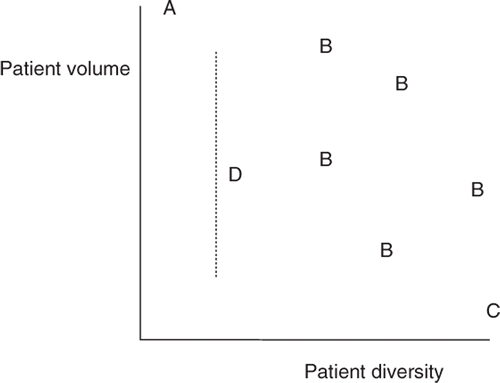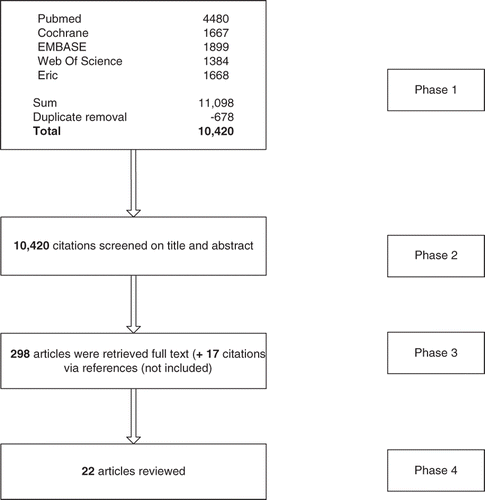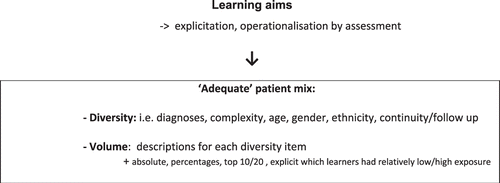Figures & data
List 1 Inclusion and exclusion criteria
Table 1 Patient mix and learning outcome instruments and descriptions
Table 2 Summary of the included studies



